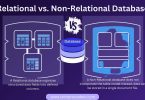The adoption of the Internet of Things (IoT) in agriculture has the potential to change the way food is grown and produced. IoT has the ability to support the intelligent and effective administration of farming operations by combining internet-connected equipment and other technologies, leading to better harvests, lower costs, and a more sustainable agricultural environment.
In today’s articles, we will explore the benefits of implementing IoT in the agricultural industry.
Precision farming:
The ability to practice precision agriculture is one of the primary advantages of incorporating IoT into agriculture. By using technology to monitor and optimize crop growth, farmers are provided with the ability to make data-driven decisions that will increase yields.
Farmers are able to collect information on soil moisture, humidity, temperature and other environmental characteristics by using IoT sensors and devices. To determine the best times to plant, the best irrigation plans, and the precise rates at which to apply fertilizer, this data will need to be analyzed. Improved yields and better crop vigor are the results of it.
Precision farming also helps to reduce the waste of resources by ensuring that crops only receive minimal amounts of water, fertilizer and other inputs. In addition to lowering farmers’ costs, this encourages sustainability by reducing the environmental impact of agricultural practices.

Livestock Monitoring and Management with IoT:
IoT is useful for monitoring livestock as well, giving farmers the ability to improve animal health and increase the productivity of the farm. Farmers are able to collect information on animal behavior, temperature changes and movement patterns by using IoT-enabled sensors. Farmers have the ability to provide quick treatment and prevent the spread of diseases by analyzing this data to discover signs of sickness or injury.
IoT makes it easier to track feed consumption and other elements that affect the health and productivity of animals. By carefully examining these variables, farmers can take data-driven decisions that affect feed formulations and other management strategies, ultimately leading to healthier animals and increased output.
Enhancing Crop Monitoring and Management Through IoT Technology:
Farmers now have the tools to maximize growth and reduce losses as a result of the IoT, which also includes crop monitoring and management. Farmers are able to adjust irrigation and management practices to ensure perfect growth circumstances by using IoT sensors to collect data on soil moisture, temperature and other environmental factors.
IoT also helps with crop health monitoring by enabling early detection of disease or pest infestation indications, facilitating rapid response before severe damage occurs. This preventive approach decreases the need for expensive chemical treatments and reduces crop losses.
Minimized Transit Losses and Improved Food Supply Chain Control System with IoT:
IoT has the potential to improve agriculture supply chains to run more efficiently. Farmers may get real-time information about the condition, location and quality of their products by using IoT-enabled sensors to follow crops and livestock across the supply chain.
IoT allows farmers to quickly identify and address problems like spoilage or damage during transportation, this improves waste reduction and reduces transportation losses. This improves transparency and traceability as well, empowering customers to choose foods in the right way.
Smart Agriculture Collaboration:
The Internet of Things (IoT) introduces in a new era of “smart farming,” which is characterized by the fusion of various technologies and gadgets to create a more effective and sustainable agricultural model. Farmers may simplify many aspects of their operations, from planting and harvesting to managing livestock and supply chains, by integrating IoT-enabled devices and technology like drones, robotics, and artificial intelligence.
Robots are carrying out tasks like planting and harvesting, while drones may gather information about crop development and identify places in fields that need special attention. Farmers may save costs, increase yields, and promote environmental sustainability by using IoT to design a more resource-efficient, sustainable and environmentally friendly agricultural system.
IoT for Sustainable Food Production to Meet Global Demand:
The use of IoT in agriculture has the potential to change how food is produced. IoT is capable of significantly improving multiple aspects of agricultural activities, leading to increased yields, decreased costs and a more sustainable agricultural model by facilitating precision agriculture, livestock monitoring, crop oversight and management, supply chain control, and smart farming.
The long-term benefits of IoT integration in agriculture are significant, regardless of the initial investment requirement. Implementing IoT in agriculture is crucial due to the quick advancements in technology and the rising demand for food over the Globe.
Summing Up:
An era of change is beginning with the emergence of IoT in agriculture. IoT enhances precision farming practices, improves livestock care and maximizes crop management by seamlessly merging technology with farming. Supply chains synchronize, waste decreases and smart farming develops. This partnership combines responsible stewardship with productivity to feed the earth sustainably while meeting rising food demand. IoT is a necessity and the compass for the future.







